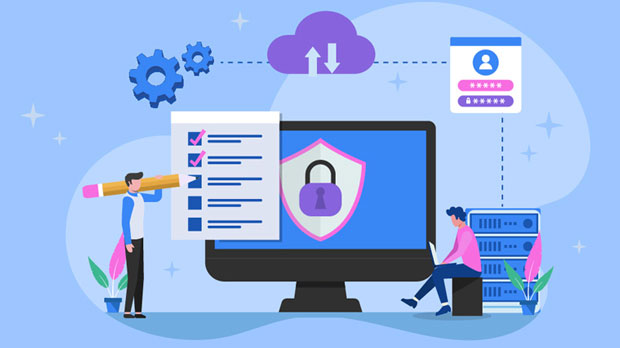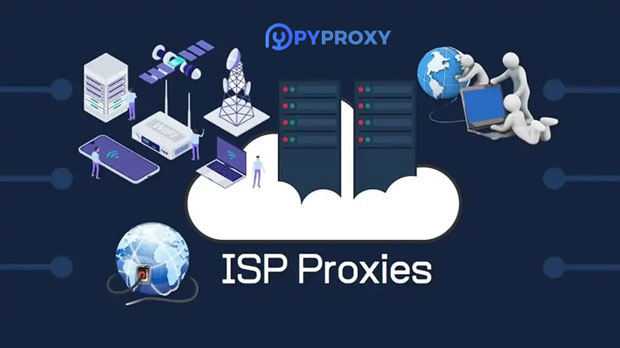Can free online SOCKS5 proxy be used to access blocked websites?
In recent years, the demand for tools to bypass internet censorship has grown substantially. One such tool that has gained attention is the socks5 proxy. This protocol is frequently discussed for its ability to help users circumvent restrictions and access blocked websites. However, when it comes to free online socks5 proxies, many are left wondering if they are a reliable solution for unblocking websites. In this article, we will explore the capabilities, limitations, and risks associated with using free SOCKS5 proxies, offering insights into whether they are a feasible option for accessing restricted content online. What is a SOCKS5 Proxy and How Does It Work?Before diving into the specific question of whether free SOCKS5 proxies can unblock websites, it’s essential to understand how SOCKS5 proxies function. SOCKS5 (Socket Secure 5) is a protocol designed to route internet traffic between a client (your device) and a destination server through an intermediary server. Unlike HTTP proxies that only handle specific types of web traffic (mainly web browsing), SOCKS5 proxies are more versatile, supporting a variety of protocols and applications, including web browsing, emails, torrents, and more.SOCKS5 proxies work by relaying your internet requests to a remote server, which then connects to the website or service you wish to access. This makes it difficult for network administrators or governments to detect your true location, as the proxy server acts as an intermediary, masking your IP address.Free vs Paid SOCKS5 Proxies: Key DifferencesWhile both free and paid SOCKS5 proxies can technically be used to access blocked websites, there are several key differences between the two that affect their performance, reliability, and security.Reliability and Speed Paid SOCKS5 proxies are typically more reliable in terms of uptime and speed. Providers often maintain a high-quality network infrastructure, ensuring fast connections and minimal downtime. In contrast, free SOCKS5 proxies are more likely to have slower speeds, frequent downtimes, and potential connection issues, making them less ideal for streaming or accessing websites with heavy data requirements.Security Concerns One of the most significant concerns with free SOCKS5 proxies is security. Free proxies are often less secure, and they may lack proper encryption. This can leave users vulnerable to attacks, including man-in-the-middle attacks, where a malicious actor intercepts data between the client and the proxy server. On the other hand, paid services tend to offer better security protocols, including encryption and additional privacy measures, to safeguard your data and identity.Privacy Issues Free proxies often track and log users’ activities, which may be shared with third parties or used for marketing purposes. This can compromise your privacy. Paid SOCKS5 proxies, depending on the provider, often have a strict no-logs policy, meaning they do not store any data about your browsing habits, enhancing your privacy while using their service.Access to Restricted Content In terms of bypassing restrictions, free SOCKS5 proxies may work temporarily but are often blocked by websites or services due to their widespread use. Many websites, particularly those employing advanced security measures, can easily detect and block IP addresses associated with free proxies. In contrast, paid SOCKS5 proxies are less likely to be flagged, as they are often distributed across a larger number of IP addresses and locations, making them harder to detect.Can Free SOCKS5 Proxies Access Blocked Websites?The simple answer is: it depends. Free SOCKS5 proxies can sometimes enable users to access blocked websites, especially if the restrictions are based on geographic location or IP addresses. However, there are several limitations and factors to consider when using free SOCKS5 proxies for this purpose.1. Limited Server Locations Most free SOCKS5 proxies offer limited server locations, which means they may only allow you to access content from certain regions. For example, if a website is blocked in a specific country, you may be able to bypass the block by connecting to a server located in a country where the website is accessible. However, with free proxies, the number of available servers is typically much smaller compared to paid services, limiting your options for unblocking content.2. Detection and Blocking by Websites Many websites, especially those that face frequent attempts to bypass censorship, have implemented sophisticated mechanisms to detect and block proxy traffic. This includes identifying IP addresses that are associated with known proxy servers. Free SOCKS5 proxies, due to their popularity and wide usage, are often detected and blocked by websites within a short time. As a result, even if you manage to access a blocked site initially, you may find that the connection is eventually blocked or throttled.3. Speed and Performance Issues Even if free SOCKS5 proxies allow you to access blocked websites, they often come with significant performance drawbacks. Free proxies are typically overloaded with users, leading to slow speeds and long loading times. This can make browsing frustrating, especially when accessing media-heavy websites or streaming services. Slow performance may also cause timeouts or interruptions in your connection, further limiting the effectiveness of free SOCKS5 proxies for accessing blocked websites.4. Legal and Ethical Risks Using a free socks5 proxy to bypass content restrictions may carry legal risks depending on the jurisdiction you are in. Many countries enforce strict laws regarding internet censorship and the use of proxies to circumvent these controls. Engaging in this activity could result in penalties, fines, or other legal consequences. Furthermore, using free proxies can expose you to ethical concerns, such as the misuse of personal data or violations of terms of service for websites and services.Conclusion: Are Free SOCKS5 Proxies Effective for Accessing Blocked Websites?In conclusion, while free SOCKS5 proxies may offer a temporary solution for accessing blocked websites, they come with several limitations that make them less reliable and effective compared to paid alternatives. The primary drawbacks include slower speeds, frequent blocking, limited server options, security concerns, and privacy risks. For users who require consistent, high-speed access to blocked content, or who are concerned about privacy and security, paid SOCKS5 proxies are generally a better choice. While free proxies may be tempting due to their zero-cost nature, they often fail to deliver the reliability, security, and performance necessary to effectively bypass internet censorship in the long term.Ultimately, whether free SOCKS5 proxies are suitable for your needs depends on your specific requirements. If you only need occasional, low-bandwidth access to blocked websites, free proxies may suffice. However, for more secure, faster, and more reliable access, opting for a paid service is often the best solution.
2025-01-07

























































